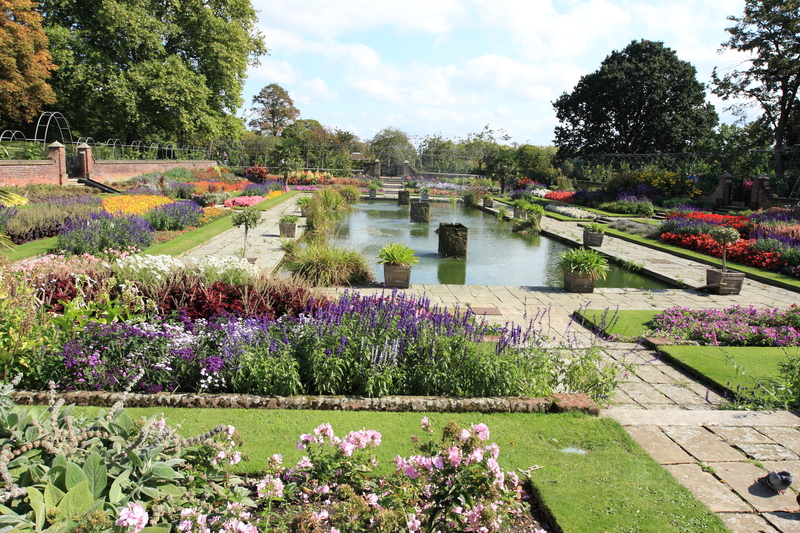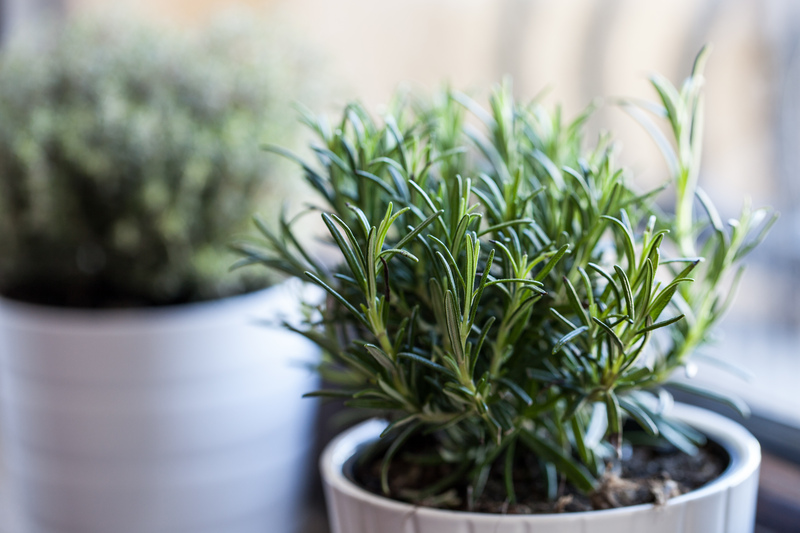How Vertical Gardening Transforms Limited Spaces
Posted on 08/06/2025
How Vertical Gardening Transforms Limited Spaces: An In-Depth Guide
In today's urban environments, where space is increasingly scarce, maximizing every inch of available area has become essential. Vertical gardening emerges as a brilliant solution, turning walls, balconies, and even fences into lush, productive landscapes. This article delves into how vertical gardening transforms limited spaces, exploring its benefits, implementation strategies, plant choices, and the remarkable impact it has on modern lifestyles.

What Is Vertical Gardening?
Vertical gardening, sometimes called living walls or green walls, involves growing plants upward rather than outward. Unlike traditional gardening methods that require expansive horizontal real estate, this approach utilizes walls, trellises, shelving, and custom frames to encourage upward plant growth.
Key components of vertical gardening include vertical supports, soilless media or traditional soil, strategic watering systems, and a thoughtful choice of plants. From simple DIY projects to professionally designed architectural features, the variations are endless.
The Origin and Evolution of Vertical Gardening
While the concept may sound modern, history offers examples such as the famous Hanging Gardens of Babylon. In recent years, the resurgence of vertical gardening is a direct response to urban densification, shrinking lawns, and the growing desire for sustainability.
- Ancient civilizations used vine training and terracing.
- Modern cities adopt vertical gardens to greenify office buildings and urban homes.
- Today's DIY vertical gardens fit balconies, patios, and even kitchen walls.
How Vertical Gardening Optimizes Limited Spaces
1. Maximizing Space Efficiency
Vertical gardening transforms small or awkward areas into productive green spaces. By utilizing vertical surfaces, you can grow a diverse range of plants in areas previously considered unusable. Whether you have a petite balcony, a modest backyard, or a wall inside your apartment, vertical gardens allow for lush growth where horizontal expansion is not possible.
- Balcony walls, fences, and patios can support vertical planters or pocket systems.
- Indoor vertical gardens utilize kitchen walls or living room dividers for herbs and ornamental plants.
- Unused vertical space becomes dynamic and beautiful with thoughtfully designed green walls.
2. Improving Urban Environments
Urban areas often suffer from concrete monotony and lack of natural greenery. Vertical gardening breaks this monotony, delivering visual appeal and tangible benefits:
- Green walls act as natural insulators, reducing building energy consumption.
- Air quality improves as plants absorb pollutants and produce oxygen.
- They create micro-habitats for pollinators and beneficial insects in the city.
3. Enhancing Aesthetics and Wellness
A key reason why vertical gardening is transforming small spaces is its profound influence on aesthetics and wellbeing:
- Living walls act as natural works of art, introducing color, texture, and a sense of tranquility.
- Indoor vertical gardens have been shown to reduce stress and boost mood.
- They inspire biophilic design, which enhances productivity and creativity in workplaces and homes.
4. Enabling Urban Food Production
Vertical vegetable gardens empower city dwellers to grow their own food, regardless of available ground space. Herbs, lettuce, tomatoes, and even strawberries can thrive in vertical planters, trellises, or wall-mounted pockets.
By adopting vertical gardening techniques in small spaces, urbanites achieve greater food sovereignty, access to fresh produce, and cultivate a deeper connection with what they eat.
Different Approaches to Vertical Gardening
There are several creative ways to implement vertical gardens in limited spaces. The best technique depends on available space, light, intended plants, and budget.
Wall-Mounted Planters
- Modular pockets or containers fixed to a wall
- Great for herbs, succulents, and low-weight ornamentals
Trellises and Climbing Support
- Trellises allow beans, peas, cucumbers, and flowering vines to grow upward.
- They can be free-standing or attached to a wall or fence.
Stacked Planter Systems
- Tiered planters or stacked pots
- Ideal for strawberries, herbs, and leafy greens
Hydroponic and Aeroponic Towers
- Soilless systems that use nutrient-rich water
- Space-efficient and suitable indoors or outdoors
Hanging Gardens
- Suspended baskets or trailing plants from ceilings or beams
- Maximize vertical capacity in apartments
Best Plants for Vertical Gardens
Not every plant adapts well to vertical arrangements. Here is a list of vibrant and hardy choices for vertical gardening in small areas:
Edible Plants
- Herbs: basil, parsley, mint, cilantro, thyme, oregano
- Lettuces and salad greens
- Strawberries
- Cherry tomatoes
- Leafy greens: kale, Swiss chard, spinach
- Snap peas and beans
Ornamental Plants
- Pothos and Philodendrons
- Spider plants
- Ferns
- Succulents (hens and chicks, sedums)
- Flowering vines: clematis, morning glory, bougainvillea, jasmine
Air-Purifying Plants
- English ivy
- Bamboo palm
- Snake plant
- Peace lily
Installation and Maintenance Tips
Setting Up Your Vertical Garden
- Sunlight: Assess the amount of sun your space receives and choose plants accordingly.
- Structure: Use sturdy anchors and supports to secure vertical frames.
- Irrigation: Install a drip irrigation system or use self-watering planters for best results.
- Soil and Nutrition: Use high-quality soil or soilless medium, and supplement with fertilizers as needed.
- Accessibility: Arrange plants based on maintenance requirements and growth habits.
Maintaining a Healthy Vertical Garden
Maintenance is simpler than many expect. Here are strategies to keep your vertical garden thriving in small spaces:
- Regular watering to prevent drying out, especially for wall-hung planters.
- Monthly feeding with liquid fertilizer during growing seasons.
- Pruning and harvesting to promote continual growth.
- Pest management with organic sprays or manual removal.
- Monitor for root-bound plants and refresh soil annually.
Vertical Gardening as a Tool for Sustainability
Vertical gardens contribute significantly to sustainable urban living by:
- Reducing urban heat islands: Living walls lower surface temperatures.
- Improving air quality: Plants absorb CO2 and harmful pollutants.
- Shrinking the food transportation footprint with on-site vegetable production.
- Creating biodiversity corridors for birds and beneficial insects.
Creative Design Ideas for Vertical Gardens
When it comes to reimagining small spaces with green solutions, vertical gardening is full of creative possibilities:
- Palette Planters: Repurpose wooden pallets for rustic vertical gardens.
- Recycled Containers: Use old bottles, cans, or shoe organizers as unique plant holders.
- Edible Walls: Grow a mix of herbs and salad greens for easy harvesting.
- Mobile Green Dividers: Use wheeled vertical garden structures as movable privacy screens inside or outside.
- Living Art: Arrange succulents and colorful foliage as framed wall art pieces.
Common Challenges and Solutions
While vertical gardening in limited space is largely rewarding, certain challenges can arise:
- Water Retention: Wall gardens dry out faster--look for self-watering or moisture-retentive systems.
- Structural Limits: Ensure walls and supports can bear the weight, especially when wet.
- Pest Management: Vertical arrangements may invite pests--regular inspection is key.
- Lighting: Limited light may require grow lights for lush indoor gardens.

Future Trends in Vertical Gardening
The global trend toward sustainable urban living positions vertical gardening for even greater growth and importance. Future innovations will include:
- Smart irrigation and automation: Sensors and timers for optimized water and nutrient delivery.
- Larger-scale installations: Green skyscrapers and residential buildings with built-in vertical gardens.
- Integration with urban agriculture: Community green walls producing food for neighborhoods.
- Hybrid solutions: Vertical gardens incorporated with solar panels or rainwater harvesting tools.
Conclusion: The Transformative Power of Vertical Gardening in Small Spaces
In summary, vertical gardening revolutionizes how we think about limited spaces. It does more than just add greenery; it reimagines walls, balconies, and compact outdoor areas as vibrant, productive, and restorative environments. The technique *maximizes the potential of otherwise idle nooks*, introduces vital ecosystem services to cities, and brings us closer to nature--one vertical foot at a time.
Whether you're seeking to grow fresh herbs in your kitchen, beautify a bare balcony, or boost your home's air quality, vertical gardening provides a practical, eco-friendly, and visually stunning solution that continues to transform small spaces all around the globe.
Ready to green your world? Start your vertical garden today and experience firsthand how it transforms your limited space into a thriving oasis.

